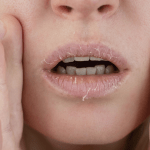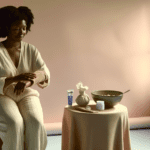Lichen Sclerosus (LS) is a chronic, inflammatory skin condition predominantly affecting the genital and anal areas, but it can also manifest on other parts of the body. Characterized by white, patchy, and thin skin, LS is not contagious and cannot be transmitted through sexual contact. The condition is more prevalent in postmenopausal women, though it can occur in individuals of any age, including children. The exact prevalence of LS is uncertain, but estimates suggest it affects between 1 in 300 to 1 in 1000 individuals. Symptoms can range from mild to severe, including itching, soreness, and pain, which can lead to significant discomfort and impact on daily activities.
Impact on Quality of Life
The symptoms of LS, particularly when affecting the sensitive genital area, can have a profound impact on an individual’s quality of life. Chronic itching and pain can lead to sleep disturbances, while scarring and skin changes can result in discomfort during sexual activity, potentially causing strain on intimate relationships. The psychological burden of dealing with a chronic skin condition can also lead to feelings of anxiety, depression, and social withdrawal. The visibility of the condition, especially when extragenital areas are affected, can further contribute to emotional distress and self-consciousness.
Importance of Early Detection and Treatment
Early detection and treatment of LS are crucial for several reasons. Prompt medical intervention can alleviate symptoms, prevent progression of the disease, and reduce the risk of complications, such as scarring and sexual dysfunction. Moreover, individuals with genital LS have a slightly increased risk of developing squamous cell carcinoma of the affected skin. Regular monitoring and treatment can help mitigate this risk. Treatment typically involves the application of medicated ointments, which can help restore the skin’s appearance and reduce the likelihood of flare-ups. Long-term follow-up care is often necessary to manage the condition effectively and monitor for potential malignancies.
Clinical Presentation of Lichen Sclerosus
Typical Symptoms
Lichen sclerosus is a chronic condition that primarily affects the anogenital region, although it can also manifest on other parts of the body. The hallmark symptom of lichen sclerosus is intense itching, which can lead to significant discomfort and distress. In addition to pruritus, individuals may experience pain, especially during sexual intercourse or when the affected skin is subject to friction. Over time, the skin may become fragile, leading to easy bruising and tearing, and in severe cases, bleeding and ulceration can occur.
Visual Characteristics of Affected Skin
The skin changes in lichen sclerosus are distinctive. Initially, there may be mild erythema (redness), which progresses to white, atrophic patches. These patches can develop into larger plaques with a porcelain-white appearance. The skin may also exhibit hyperkeratosis (thickening) and sclerosis (hardening), leading to a wrinkled or crinkled texture. In advanced stages, scarring can lead to architectural changes, such as narrowing of the vaginal introitus or foreskin.
Variability and Severity of Symptoms
The symptoms of lichen sclerosus can vary widely in severity and progression. Some individuals may have minimal or no symptoms, while others suffer from severe and persistent discomfort. The condition can also fluctuate, with periods of remission and flare-ups. The severity of symptoms does not always correlate with the visual appearance of the skin, as even mild-looking lesions can cause significant symptoms.
Common Misdiagnoses
Lichen sclerosus can be mistaken for other dermatological conditions, leading to misdiagnosis. Common conditions that may mimic lichen sclerosus include lichen planus, psoriasis, eczema, and candidiasis. Misdiagnosis can result in inappropriate treatment, which may exacerbate symptoms or lead to unnecessary procedures. Therefore, a high index of suspicion and confirmatory biopsy are often necessary for accurate diagnosis.
Pathophysiology and Etiology
Autoimmune Factors
Lichen sclerosus (LS) is characterized by an autoimmune response, with evidence suggesting a significant role for T cells, autoantibodies, and cytokines in its pathophysiology. The condition is associated with other autoimmune diseases such as alopecia areata, vitiligo, autoimmune thyroiditis, and pernicious anemia, indicating a probable multifactorial etiology. Activated T cells infiltrate the affected skin, releasing interleukin 4 (IL 4) and transforming growth factor β (TGF β), which activate fibroblasts and lead to altered collagen production and fibrosis. Additionally, vascular damage and a decrease in capillary numbers contribute to the disease’s progression.
Genetic Predisposition
LS has a genetic component, with familial clustering observed in some cases. Specific HLA types have been implicated in increasing susceptibility to LS, suggesting a genetic predisposition. The presence of certain HLA alleles may influence the severity and presentation of the disease, although the exact genetic mechanisms remain to be fully elucidated.
Hormonal Influences
The bimodal age distribution of LS, with peaks in prepubertal girls and postmenopausal women, suggests a potential link with hormonal status. However, the exact role of hormones in LS is not well understood. Previous theories posited a connection with low estrogen levels or testosterone deficiency, but these have not been substantiated by robust evidence. Current understanding does not support the use of hormone therapy as an effective treatment for LS.
Environmental and Traumatic Triggers
Environmental factors and local trauma can exacerbate LS, potentially through the Koebner phenomenon, where skin lesions appear at sites of injury. Chronic irritation, such as from scratching or occlusive garments, may precipitate or worsen LS. Additionally, some studies have explored the association between LS and infectious agents, but the evidence is not conclusive. The role of infections like Borrelia burgdorferi and viruses such as HPV in the etiology of LS remains controversial, with no definitive causal link established.
Diagnosis of Lichen Sclerosus
Clinical Examination and History
The initial step in diagnosing lichen sclerosus typically involves a thorough clinical examination and a detailed medical history. Health care providers look for characteristic signs on the affected skin, which may include white patches, thinning, and bruising. A patient’s history of symptoms such as itching, soreness, or pain during sexual intercourse can also be indicative. It is important to document any previous skin conditions, injuries to the affected area, and family history of lichen sclerosus or other autoimmune diseases.
Biopsy and Histopathology
If the clinical presentation suggests lichen sclerosus but the diagnosis is uncertain, or if there is a lack of response to treatment, a biopsy may be necessary. This involves removing a small piece of skin from the affected area for microscopic examination. Histopathology can confirm the diagnosis by revealing characteristic changes in the skin’s structure, such as thinning of the epidermis and scarring of the dermis. A biopsy is also crucial to rule out the possibility of skin cancer, which can sometimes occur in association with lichen sclerosus.
Differential Diagnosis
Lichen sclerosus can be mistaken for other skin conditions that cause similar symptoms, such as eczema, psoriasis, or vitiligo. Therefore, differential diagnosis is a critical part of the evaluation process. Health care providers must consider and rule out these other conditions based on clinical features, symptomatology, and, when necessary, biopsy results. For example, lichen planus is another condition that can affect the genitals and should be differentiated from lichen sclerosus.
Role of Imaging and Other Diagnostic Tools
While imaging is not typically used in the diagnosis of lichen sclerosus, it may be employed in certain cases to assess the extent of tissue involvement, especially if scarring has occurred. Ultrasound imaging can sometimes be helpful in evaluating the thickness of the skin and the presence of underlying scarring. Other diagnostic tools are not commonly used in the diagnosis of lichen sclerosus but may be employed to monitor treatment response or to investigate complications, such as urinary symptoms that might suggest urethral involvement.
In summary, the diagnosis of lichen sclerosus is primarily clinical, supported by biopsy and histopathology when necessary. Differential diagnosis is important to exclude other conditions, and while imaging is not routinely used, it may be helpful in certain scenarios. Ongoing research may lead to the development of new diagnostic tools in the future.
Treatment Strategies
Topical Treatments and Steroids
The cornerstone of managing Lichen Sclerosus (LS) involves the use of topical corticosteroids, particularly clobetasol propionate 0.05%. This high-potency steroid is typically applied twice daily for a course of three months, with many patients experiencing significant symptom relief and improvement in skin appearance. Ointments are generally preferred over creams due to better potency and fewer irritative side effects. After the initial treatment phase, the frequency of application may be reduced to a maintenance schedule or used as needed for flare-ups. It is important to monitor for potential side effects such as skin atrophy, which can be mitigated by careful dosing and intermittent use.
Advanced Therapeutic Options
For patients who do not respond adequately to topical steroids, or who experience frequent recurrences, advanced therapeutic options may be considered. These include topical calcineurin inhibitors like tacrolimus and pimecrolimus, which have shown effectiveness in some cases, particularly for patients with steroid-resistant LS or those who cannot tolerate steroids. However, their long-term safety profile is not fully established, and they are not considered first-line treatments. Other options such as systemic retinoids or methotrexate may be used in severe or refractory cases, but these are associated with significant potential side effects and require careful monitoring.
Surgical Interventions
Surgical interventions are typically reserved for severe cases of LS where there is significant scarring or anatomical changes that impact function. For men, circumcision is often curative for genital LS. For women, surgical options may include procedures to release adhesions or correct anatomical changes. However, surgery carries the risk of triggering further LS activity due to the Koebner phenomenon, where new lesions develop in response to trauma. Therefore, surgery is considered only after careful evaluation and when medical treatments have failed to provide relief.
Lifestyle Adjustments and Supportive Care
Lifestyle adjustments play a crucial role in managing LS. Patients are advised to avoid irritants such as tight clothing and harsh soaps, and to use emollients regularly to protect the skin. Good hygiene practices and the use of barrier creams can help minimize discomfort. Additionally, patient education on the chronic nature of LS and the importance of regular follow-up is vital for long-term disease management. Support groups and counseling may be beneficial for coping with the emotional and psychosocial aspects of living with LS.
Overall, the treatment of LS is individualized and may require a combination of therapies to achieve the best outcomes. Regular monitoring and follow-up care are essential to manage this chronic condition effectively.
Complications and Associated Risks
Short-term Complications
Lichen Sclerosus (LS) can lead to a range of short-term complications, primarily due to the inflammation and thinning of the skin. Patients may experience severe itching, soreness, and a burning sensation, which can lead to scratching and further damage to the skin. This can result in easy bruising, tearing, and the development of blisters or ulcerations. In severe cases, the scarring can cause narrowing of the genital structures, leading to difficulties in urination and sexual intercourse. For children, particularly those with perianal LS, constipation can be a significant short-term complication.
Long-term Health Risks
Untreated or chronic LS can result in permanent changes to the skin and underlying tissues, leading to long-term health risks. These include progressive scarring and atrophy, which may cause functional impairments such as phimosis in males, and narrowing of the vaginal introitus in females. Chronic inflammation and scarring can also lead to difficulties with urination, defecation, and pain during sexual activity. Additionally, the chronic nature of the disease often necessitates ongoing treatment and management to prevent further deterioration.
Psychosocial Implications
The impact of LS on a patient’s quality of life can be profound. The visibility and location of the lesions, along with the associated symptoms, can lead to significant psychological distress. Patients may experience feelings of shame, anxiety, and depression, particularly as the disease can affect intimate relationships and sexual health. The chronic itching and discomfort can also disrupt sleep and daily activities, further affecting mental well-being.
Risk of Malignancy
One of the most serious risks associated with LS, particularly in the anogenital area, is the potential for malignant transformation. Women with vulvar LS have an increased risk of developing squamous cell carcinoma of the vulva, with estimates of this risk ranging up to 5%. Although the association between penile LS and squamous cell carcinoma is less clear, there is still a concern for malignancy. Regular monitoring and follow-up care are essential for early detection and intervention. It is important to note that extragenital LS does not carry the same risk of malignancy.
Living with Lichen Sclerosus
Managing Symptoms and Flare-ups
For individuals living with Lichen Sclerosus (LS), managing symptoms and preventing flare-ups is a daily concern. Long-term topical treatments, such as highly potent steroids, have been shown to be effective in controlling the condition. Patients are encouraged to adhere to their treatment plans and to be vigilant about self-care techniques. It is essential to recognize the triggers that may exacerbate symptoms and to understand the importance of gentle skin care. For example, using non-irritating cleansers and avoiding scratching can help minimize discomfort. Additionally, some patients find relief in soaking with antimicrobial emulsions or using hormone-free vaginal moisturizers. It is crucial for patients to work closely with healthcare providers to tailor a management plan that suits their individual needs.
Emotional and Sexual Well-being
The emotional and sexual well-being of individuals with LS can be significantly impacted by the condition. The chronic nature of LS, along with its symptoms, can lead to feelings of shame, isolation, and a loss of sexual identity. It is important for patients to communicate openly with their partners and healthcare providers about their concerns. Healthcare professionals should provide empathetic support and consider the psychological impact of LS when advising on treatment options. Interventions such as counseling or sex therapy may be beneficial for some individuals. Moreover, using specialized products for intimacy can help alleviate discomfort and improve sexual experiences.
Support Networks and Resources
Support networks play a vital role in the lives of those with LS. Online forums and patient groups offer a platform for sharing experiences, advice, and emotional support. These communities can help reduce the stigma and loneliness associated with LS by fostering a sense of belonging. However, it is important to balance the information and stories shared within these groups to avoid increasing anxiety. Healthcare professionals should also guide patients towards reliable sources of information and support services that can assist in managing the condition.
Future Outlook and Ongoing Research
The future outlook for LS involves ongoing research to improve understanding and treatment of the condition. There is a need for qualitative and mixed-methods research to capture patient experiences and inform healthcare practices. Priorities for research may include developing new treatments, improving diagnostic pathways, and enhancing self-management strategies. Additionally, efforts to increase public awareness and education about LS are crucial to address societal stigma and improve the quality of life for those affected. As research progresses, it is hoped that more effective treatments and support mechanisms will become available, offering hope to those living with LS.













